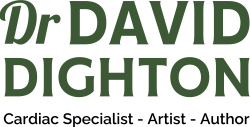





©daviddighton.com 2024




THE DOCTOR'S APPRENTICE
The Art and Science of Medical Practice.

'The Doctor's Apprentice
The Art and Science of Medical Practice.'
Contents
Poem: 'The Art of Medicine.
Preface
Introduction (click here to read)
PART 1
Clinical Encounters
Medical Encounters and Apprentices
How Doctors Function
A Compendium of Doctors
About Patients
A Compendium of Patients
The Doctor-
Cultural Difference and Clinical Medicine
PART 2
Diagnosis, Diagnosis, and Diagnosis
Patient History Taking
Examination
Other Consulting Room Matters
Investigation
Clinical Process
PART 3
The Tools of Medical Management
Clinical Decision Tools
Clinical Judgement
Clinical Management
Clinical Research
PART 4
Epilogue
Glossary of terms.
Bibliography
References
Further Acknowledgements
Appendices: A: Proforma history sheet.
B: Sleep Article.
Index
INTRODUCTION
The Doctor's Apprentice
The Art and Science of Medical Practice.
What does it take for a doctor to become successful in the eyes of patients? What does it take to be a successful member of the medical profession, and are these requirements compatible? These are questions that should concern every patient.
In the rainforest on Pu'u Kukai, Maui, Hawaii, heaven is said to meet Earth.
Interesting things happen at frontiers. Frontiers exist between doctors and patients, between doctors and other doctors, and between doctors and the nurses, pharmacists, paramedics, and other care workers they work with. At the frontier between patients and those they know, many attitudes form about doctors and other medical professionals, and how medical practice functions.
Other important frontiers are:
- Between the science and art of medicine.
- Between sentient human beings and computers.
- Between anonymous medical corporations like the NHS, GMC, CQC (Care Quality Commission), and PSA (the Professional Standards Authority), all run by bureaucrats, and individual health workers and their patients.
- Between the NHS and independent private practice.
- Between wealth and poverty (as major influencers of health and disease).
Each of these affect patient morbidity and mortality. All affect the benefits and disadvantages available to patients. All influence how medicine is practised in the UK today.
I regard the practise of medicine as sacrosanct since it holds the lives of patients in its hands with no purpose other than to respond successfully to their medical needs. Many political issues now interfere with this purpose. Staffing, funding, and the bureaucracy of the NHS all affect patient morbidity and mortality. These factors hardly exist in private medical practice, and patients can benefit accordingly.
A patient's life and death can depend on their wealth and inclination to be treated privately or by the NHS. Many patients in the UK are mostly blind to this, choose to ignore it, or have no option but to accept it. The wealthy can choose their doctors and their medical services; NHS patients must put their faith in what politicians and medical bureaucrats choose to provide for them. NHS medical bureaucrats, who are mostly anonymous, believe they are qualified to direct the way doctors and nurses practise. In private medicine, it is experienced doctors and nurses who decide every clinical issue. A frontier formed between the new NHS and private medicine in 1948. That frontier remains and separates two distinct medical cultures.

| Who Loses Wins |
| The Doctor's Apprentice |
| The NHS. Our Sick Sacred Cow |